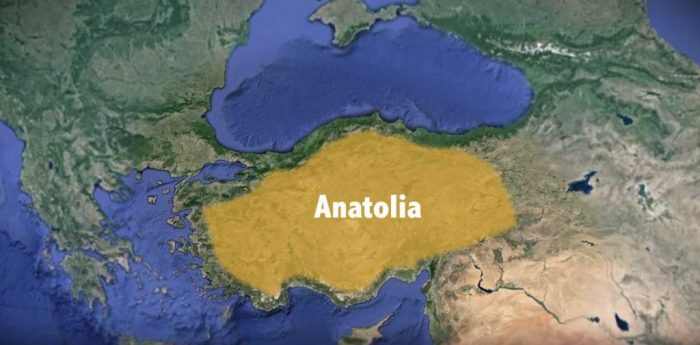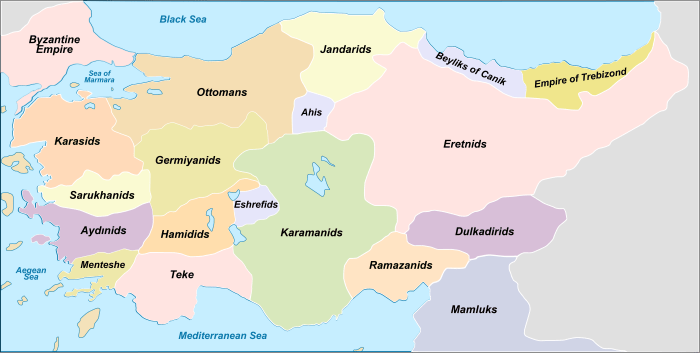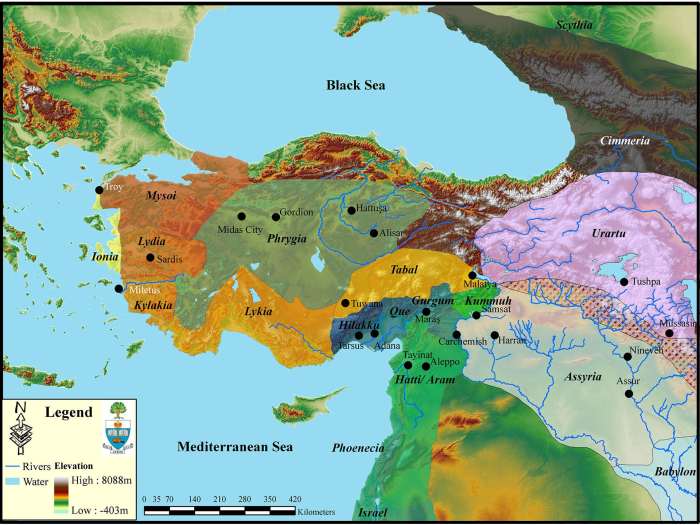Anatolia, a land of captivating history, diverse cultures, and breathtaking landscapes, beckons travelers and scholars alike to delve into its enigmatic depths. From the dawn of ancient civilizations to its pivotal role in the modern world, Anatolia’s story is a tapestry woven with rich threads of human endeavor.
Throughout history, Anatolia has been a melting pot of cultures, a crossroads where East met West, and a cradle of empires. From the Hittites to the Romans, from the Byzantines to the Ottomans, Anatolia’s fertile plains and strategic location have shaped its destiny, leaving behind a legacy of architectural wonders, artistic masterpieces, and cultural traditions.
History of Anatolia

Anatolia, the peninsula that forms the majority of modern-day Turkey, has a rich and diverse history that spans millennia. It has been home to numerous ancient civilizations, each leaving its unique mark on the region.
One of the earliest known civilizations in Anatolia was the Hittites, who established a powerful empire in the 17th century BCE. The Hittites were known for their advanced military technology, including the use of iron weapons and chariots. They also developed a sophisticated system of writing, known as cuneiform, and were the first to use horses for transportation and warfare.
The Hittite Empire eventually collapsed around 1200 BCE, and Anatolia was subsequently ruled by a series of smaller kingdoms and empires. These included the Phrygians, Lydians, and Persians. Each of these civilizations contributed to the cultural and economic development of Anatolia, and the region became a crossroads of different cultures and civilizations.
Timeline of Major Historical Events in Anatolia
- 17th century BCE: Establishment of the Hittite Empire
- 1200 BCE: Collapse of the Hittite Empire
- 8th century BCE: Rise of the Phrygian Kingdom
- 7th century BCE: Rise of the Lydian Kingdom
- 546 BCE: Conquest of Anatolia by the Persian Empire
- 334 BCE: Conquest of Anatolia by Alexander the Great
- 1st century CE: Anatolia becomes part of the Roman Empire
- 11th century CE: Conquest of Anatolia by the Seljuk Turks
- 13th century CE: Establishment of the Ottoman Empire
- 1923 CE: Foundation of the Republic of Turkey
Anatolia as a Crossroads of Different Cultures and Civilizations
Anatolia’s strategic location at the crossroads of Europe and Asia has made it a melting pot of different cultures and civilizations throughout history. The region has been influenced by a wide range of cultures, including Greek, Roman, Persian, Arab, and Turkish. This has resulted in a rich and diverse cultural heritage that is reflected in the region’s architecture, art, music, and cuisine.
Geography of Anatolia

Anatolia, also known as Asia Minor, is a large peninsula in western Asia that forms the main part of Turkey. It is bounded by the Black Sea to the north, the Mediterranean Sea to the south, the Aegean Sea to the west, and the Armenian Highlands to the east.
Anatolia is a land of contrasts, with a variety of physical features. The interior of the peninsula is a high plateau, with an average elevation of about 1,000 meters (3,300 feet). The plateau is surrounded by mountains, including the Pontic Mountains to the north, the Taurus Mountains to the south, and the Anti-Taurus Mountains to the east.
The plateau is drained by several rivers, including the Sakarya River, the Kizilirmak River, and the Seyhan River. The coastline of Anatolia is mostly rocky, with a few sandy beaches.
The climate of Anatolia varies from region to region. The coastal areas have a Mediterranean climate, with hot, dry summers and mild, wet winters. The interior of the peninsula has a continental climate, with cold, snowy winters and hot, dry summers.
Mountains of Anatolia
The mountains of Anatolia are a major physical feature of the peninsula. The highest mountain in Anatolia is Mount Ararat, which is located in the east. Mount Ararat is a dormant volcano that rises to a height of 5,137 meters (16,854 feet).
Other major mountains in Anatolia include the Pontic Mountains, the Taurus Mountains, and the Anti-Taurus Mountains. The Pontic Mountains are located along the northern coast of Anatolia. The Taurus Mountains are located along the southern coast of Anatolia. The Anti-Taurus Mountains are located in the east-central part of Anatolia.
Rivers of Anatolia
The rivers of Anatolia are a vital source of water for the people and animals of the peninsula. The largest river in Anatolia is the Sakarya River. The Sakarya River flows from the Pontic Mountains to the Black Sea.
Other major rivers in Anatolia include the Kizilirmak River and the Seyhan River. The Kizilirmak River flows from the Taurus Mountains to the Mediterranean Sea. The Seyhan River flows from the Anti-Taurus Mountains to the Mediterranean Sea.
Coastline of Anatolia
The coastline of Anatolia is mostly rocky, with a few sandy beaches. The northern coast of Anatolia is indented by the Black Sea. The southern coast of Anatolia is indented by the Mediterranean Sea. The western coast of Anatolia is indented by the Aegean Sea.
The coastline of Anatolia is home to several major ports, including Istanbul, Izmir, and Antalya. Istanbul is the largest city in Turkey and is located on the Bosporus Strait. Izmir is the third-largest city in Turkey and is located on the Aegean Sea. Antalya is a major tourist destination and is located on the Mediterranean Sea.
Climate of Anatolia
The climate of Anatolia varies from region to region. The coastal areas have a Mediterranean climate, with hot, dry summers and mild, wet winters. The interior of the peninsula has a continental climate, with cold, snowy winters and hot, dry summers.
The climate of Anatolia is influenced by several factors, including the mountains, the rivers, and the coastline. The mountains block the cold winds from the north, which makes the interior of the peninsula warmer than it would be otherwise. The rivers provide water for irrigation, which makes the land more fertile. The coastline provides a source of moisture for the land, which helps to moderate the climate.
Culture of Anatolia
Anatolia, with its rich tapestry of civilizations, boasts a vibrant and diverse cultural heritage. From the captivating melodies of its music to the mesmerizing rhythms of its dances, Anatolia’s culture is a testament to the region’s storied past and enduring traditions.
The influence of different religions and ethnic groups has left an indelible mark on Anatolian culture. The legacy of ancient civilizations, such as the Hittites, Greeks, and Romans, is evident in its architecture, art, and language. The arrival of Christianity and Islam further enriched Anatolia’s cultural landscape, contributing to the development of diverse religious practices, traditions, and artistic expressions.
Music and Dance
Anatolian music is a captivating blend of traditional and modern influences. Regional folk music, known as “türkü,” showcases the diverse cultural heritage of Anatolia. These songs often feature poignant lyrics that narrate stories of love, loss, and the human experience. Instruments such as the bağlama (a stringed instrument), the ney (a reed flute), and the darbuka (a goblet drum) are integral to Anatolian music.
Anatolian dance is equally vibrant and expressive. The traditional “halay” dance, performed in a circle, is a symbol of unity and celebration. Other popular dances include the “horon” from the Black Sea region, the “zeybek” from the Aegean region, and the “şıh barı” from the Central Anatolian region.
Cuisine
Anatolian cuisine is a culinary delight, renowned for its fresh ingredients, aromatic spices, and diverse flavors. The region’s rich agricultural heritage has contributed to a wide variety of dishes, from hearty stews to delicate pastries.
Anatolia, a captivating region in Turkey, is renowned for its diverse landscapes. While it lacks the towering peaks of the Alps , it boasts its own unique mountains and rolling hills. The Anatolian plateau, a vast expanse of arid plains, contrasts sharply with the lush coastal regions.
Anatolia’s rich history and cultural heritage are reflected in its ancient ruins, vibrant cities, and warm hospitality, making it a fascinating destination for travelers seeking a blend of nature and culture.
- Kebabs: Grilled or roasted meat dishes are a staple of Anatolian cuisine. The famous “döner kebab” is a thinly sliced, seasoned meat cooked on a vertical rotisserie.
- Mezes: Small appetizers, often served before the main meal, are an integral part of Anatolian dining. Mezes include a variety of dips, spreads, and salads.
- Lahmacun: A thin, crispy flatbread topped with minced meat, vegetables, and spices, lahmacun is a popular street food in Anatolia.
Crafts and Arts
Anatolia has a long tradition of craftsmanship and artistry. Traditional crafts include:
- Carpet weaving: Anatolian carpets are renowned for their intricate designs and vibrant colors. They are often hand-woven using traditional techniques passed down through generations.
- Pottery: Anatolia has a rich history of pottery making, with distinct regional styles and techniques. Kütahya ceramics, with their delicate floral motifs, are particularly famous.
- Jewelry: Anatolian jewelry is known for its intricate filigree work and use of precious metals. Traditional designs often incorporate symbolic motifs and gemstones.
Economy of Anatolia

The economy of Anatolia is a diverse and growing one, with a mix of agriculture, tourism, and manufacturing. The region is also home to a number of important natural resources, including minerals, oil, and natural gas.
Agriculture is a major industry in Anatolia, with the region producing a wide variety of crops, including wheat, barley, cotton, and tobacco. The region is also a major producer of livestock, including sheep, goats, and cattle.
Tourism is another important industry in Anatolia, with the region being home to a number of historical and cultural sites, including the ancient city of Ephesus and the Hagia Sophia. The region is also home to a number of beautiful beaches and resorts.
Manufacturing is also a major industry in Anatolia, with the region being home to a number of factories and industrial plants. The region produces a wide variety of goods, including textiles, chemicals, and machinery.
Challenges and Opportunities
The Anatolian economy faces a number of challenges, including:
- High levels of unemployment
- A lack of infrastructure
- Political instability
However, the region also has a number of opportunities, including:
- A young and growing population
- A wealth of natural resources
- A strategic location between Europe and Asia
Economic Growth and Development
The Anatolian economy has grown significantly in recent years. In 2018, the region’s GDP was estimated to be $750 billion. The region’s GDP is expected to continue to grow in the coming years, with a number of new projects and investments being planned.
People of Anatolia

Anatolia, the Asian part of Turkey, is a melting pot of cultures and ethnicities. The region has been home to numerous civilizations throughout history, leaving behind a rich tapestry of peoples and traditions.
Ethnic Groups
The largest ethnic group in Anatolia is the Turkish people, who constitute around 85% of the population. Other significant ethnic groups include Kurds, Arabs, Armenians, Greeks, and Circassians.
Demographic Trends
The population of Anatolia has been steadily increasing in recent decades. In 2023, the region’s population was estimated at around 85 million, with an annual growth rate of approximately 1%. The population is concentrated in urban areas, with Istanbul, Ankara, and Izmir being the largest cities.
Population Distribution
The population density in Anatolia varies considerably, with the coastal regions and major cities being more densely populated than the interior. The most densely populated areas are the Marmara and Aegean regions, while the least densely populated areas are the Eastern and Southeastern Anatolian regions.
Literacy and Life Expectancy, Anatolia
The literacy rate in Anatolia is high, with over 95% of the population able to read and write. Life expectancy has also increased significantly in recent decades, with the average life expectancy now standing at around 78 years.
Tourism in Anatolia

Anatolia, the vast peninsula that forms the heart of Turkey, is a treasure trove of ancient ruins, natural wonders, and cultural landmarks. With its rich history and diverse landscapes, it offers a unique and unforgettable experience for tourists from all over the world.
The infrastructure and facilities available for tourists in Anatolia are well-developed. Major cities like Istanbul, Ankara, and Izmir have international airports and excellent transportation links. There are also a number of tour operators that offer guided tours of the region’s most popular attractions.
Anatolia, a historical and cultural crossroads of civilizations, is home to ancient ruins and breathtaking landscapes. While not as towering as Aconcagua , the highest mountain outside of Asia, Anatolia’s peaks and valleys offer a unique blend of natural beauty and historical significance, making it a fascinating destination for travelers seeking both adventure and cultural immersion.
Major Tourist Attractions
Some of the most popular tourist attractions in Anatolia include:
- Ancient Ruins: Anatolia is home to some of the world’s most impressive ancient ruins, including the ruins of Troy, Ephesus, and Pergamon.
- Natural Wonders: The region is also home to a number of natural wonders, such as the Cappadocia region with its unique rock formations, and the Pamukkale hot springs.
- Cultural Landmarks: Anatolia is also home to a number of important cultural landmarks, such as the Hagia Sophia in Istanbul and the Mevlana Museum in Konya.
Tips for Planning a Trip
Here are a few tips for planning a trip to Anatolia:
- Plan your itinerary in advance: Anatolia is a large region with a lot to offer, so it’s important to plan your itinerary in advance to make sure you see everything you want to see.
- Book your flights and accommodation early: Especially if you are traveling during the peak season, it’s important to book your flights and accommodation early to get the best deals.
- Learn some basic Turkish: Learning a few basic Turkish phrases will help you get around and communicate with locals.
- Be prepared for the weather: Anatolia has a continental climate, so the weather can vary depending on the time of year. Be sure to pack for all types of weather.
Anatolia in the Modern World
Anatolia continues to play a pivotal role in modern Turkey and the broader region. It remains the economic and cultural heartland of the country, housing major cities like Ankara, Istanbul, and Izmir. Anatolia also serves as a strategic bridge between Europe and Asia, connecting Turkey to its neighbors in the Middle East and beyond.
In the 21st century, Anatolia faces a range of challenges and opportunities. One challenge is the need to modernize its infrastructure and economy. While Anatolia has made significant progress in recent decades, it still lags behind Western Europe in terms of transportation, energy, and telecommunications. Another challenge is the need to address regional disparities. While Ankara and Istanbul are relatively prosperous, many rural areas of Anatolia remain underdeveloped.
Anatolia, a land of ancient history and cultural heritage, offers a rich tapestry of experiences for travelers. To plan your journey wisely, consider using a travel budget calculator. This tool can help you estimate expenses and ensure you make the most of your time in Anatolia, where you can explore ancient ruins, immerse yourself in local traditions, and marvel at the stunning landscapes that have shaped its history.
Despite these challenges, Anatolia also has a number of opportunities. The region is rich in natural resources, including minerals, agriculture, and tourism. Anatolia is also home to a young and growing population, which provides a valuable labor force. If Anatolia can successfully address its challenges and capitalize on its opportunities, it has the potential to become a major economic and cultural hub in the 21st century.
The Future of Anatolia
The future of Anatolia is uncertain, but it is likely to remain a key region in Turkey and the wider Middle East. The region’s strategic location, natural resources, and young population give it the potential to become a major economic and cultural hub. However, Anatolia also faces a number of challenges, including the need to modernize its infrastructure and economy, and to address regional disparities. If Anatolia can successfully address these challenges, it has the potential to become a prosperous and stable region in the 21st century.
Outcome Summary
In the 21st century, Anatolia continues to evolve, embracing modernity while preserving its rich heritage. As a vibrant region within Turkey, it faces both challenges and opportunities, balancing economic growth with environmental sustainability and cultural preservation. Anatolia’s future is as promising as its past, poised to captivate generations to come with its timeless allure.
Questions and Answers
What are the major historical civilizations that flourished in Anatolia?
Anatolia was home to numerous ancient civilizations, including the Hittites, Phrygians, Lydians, Greeks, Romans, Byzantines, and Ottomans.
What is the geographical significance of Anatolia?
Anatolia is located at the crossroads of Asia and Europe, making it a strategic land bridge between the two continents. It is also a region of diverse landscapes, ranging from towering mountains to fertile plains and a long coastline.
What are some of the cultural highlights of Anatolia?
Anatolia boasts a rich cultural heritage, with diverse traditions in music, dance, cuisine, crafts, and arts. It is home to ancient ruins, historical sites, and vibrant cities that showcase its cultural tapestry.